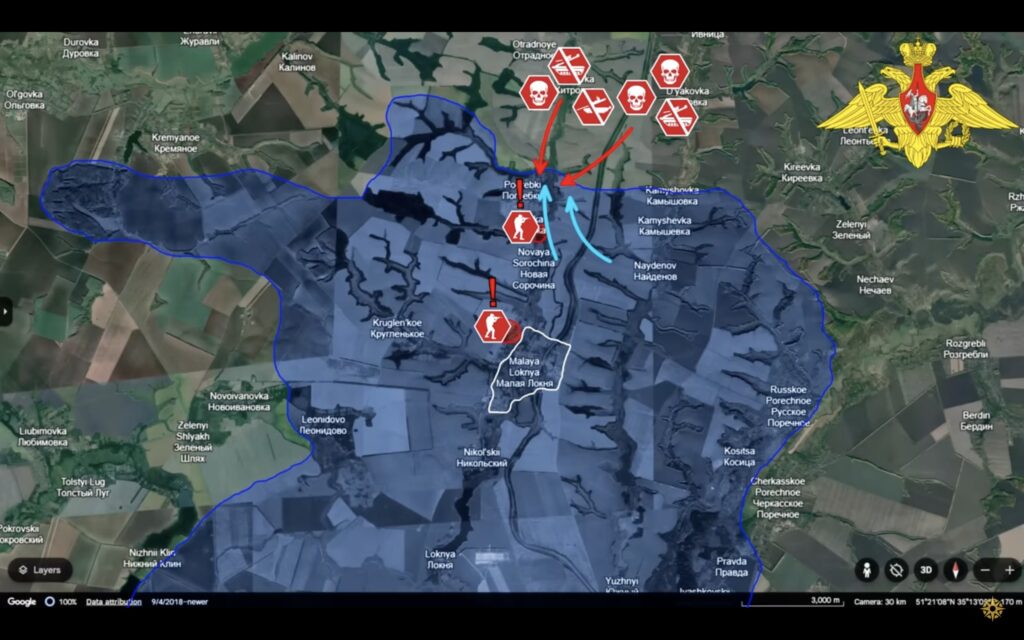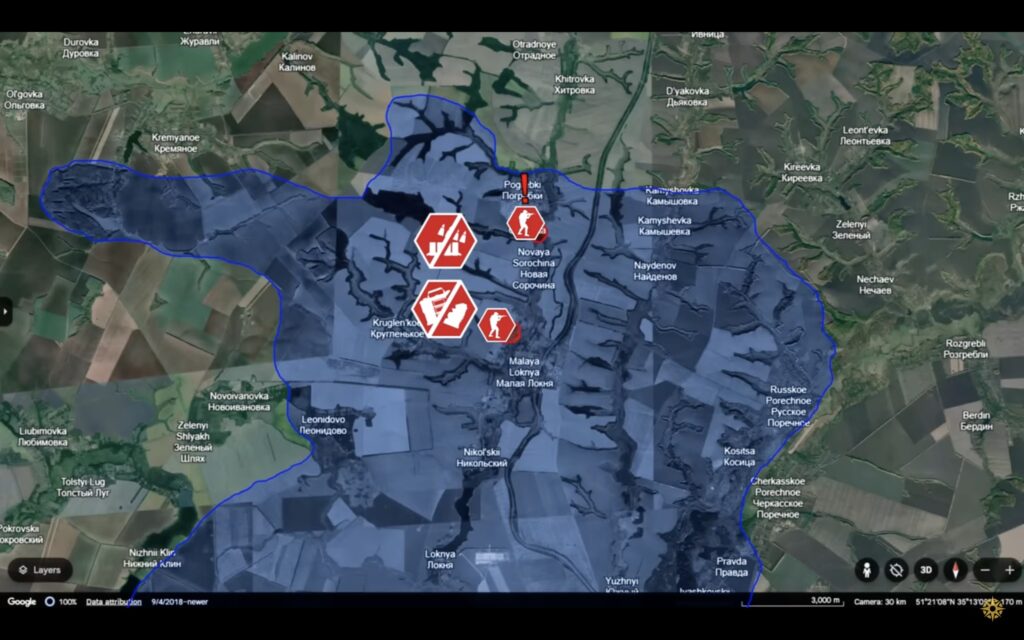Frontline report: Russian commanders’ lies about gains in Kursk Oblast leave soldiers trapped
Russian low-level commanders reported false claims to their military leadership about capturing four strategic villages near Malaya Lokhnya, which resulted in two Russian units becoming encircled without supplies or reinforcement options.


Today there are a lot of interesting updates from the Kursk direction, Russia.
Here, two Russian offensive groups remain besieged in two separate pockets near Malaya Lokhnya after previous unsuccessful attempts to break them out by the counterattacks of the main Russian forces.
To make the situation more disastrous for the Russians, it has just been exposed that the field commanders in this area lied about the success of the assaults on Malaya Lokhnya and the frontline changes, which led to catastrophic results for the next stage of their planned operation.

Previously, Russian low-level field commanders operating near Pogrebki fabricated reports that contradicted the actual situation on the ground in the Kursk direction. According to these reports, a mechanized counterattack by the 810th Marine Brigade had successfully retaken control of the villages of Pogrebki, Orlovka, Staraya Sorochina, and Novaya Sorochina.
The commanders claimed that the capture of these settlements brought Russian forces directly to the outskirts of Malaya Lokhnya.
This false narrative led to a complete lack of situational awareness on the battlefield. In reality, the Russians did not control these settlements.
Instead, a hundred Russian soldiers from the broken units were actually encircled with no chance to break out. In an attempt to secretly salvage the situation and align with the reports submitted to higher command, Russian commanders ordered repeated waves of assaults.

Such desperate attempts to fix the situation were not communicated to the Ministry of Defense and therefore failed to secure the necessary support, which led to even higher unreported losses, significantly depleting the reserves created for the counteroffensive operation.
This approach is common among low-level Russian commanders, who often report the success of their operations prematurely, sometimes days before the reported territorial gains are actually achieved. In this particular section of the front, however, there was no real advancement by Russian forces. The key issue in this area was that the initial assault forces, which were claimed to have secured the reported territorial gains were running out of supplies and were at the highest risk of being destroyed.
Due to the unawareness of unreported losses, Russian higher-ups in the Ministry of Defense expected the low-level commanders to launch assaults directly against Malaya Lokhnya, assuming that the previously reported positions had been captured.
However, this was not feasible, partly as there were no reserves available for the assault and no forces stationed at the supposedly secured territories. This discrepancy raised questions both among Russian leadership and the public as to why the planned counterattacks had not progressed according to plan.

It quickly became apparent that the Russian brigade commanders had exhausted their reserves while attempting to capture the territories they had falsely reported as already secured. This failure also revealed the existence of two pockets of Russian troops left encircled as a result of the botched assaults. The shortages of supplies, ammunition, and support eventually led to the complete destruction of one of these encircled groups, further exacerbating the already deteriorating situation.
Overall, the poor planning and execution of the third wave of the Russian counteroffensive operation had led to disastrous results, and hundreds of soldiers with no way out. The Russian commanders still reported that these units were not encircled but that they actually held the ground, creating significant gaps in battlefield awareness between low and high-level commanders.
As a result, the subsequent waves of assaults were repelled, and the failure to capture the ground has already led to the destruction of half of the encircled troops in one of two pockets near Malaya Lokhnya.

Despite the heavy losses, recent reports suggest that the Russian command is accumulating both elite marines and paratroopers from the 83rd Airborne Brigade, 155th Marine Brigade, and 51st Airborne Regiment. They are hoping to expand the scope of their assaults in all areas of Kursk, while the forces in the Malaya Lokhnya-Pogrebki axis are operating from ground zero after disastrous results of failed attacks.
In our regular frontline report, we pair up with the military blogger Reporting from Ukraine to keep you informed about what is happening on the battlefield in the Russo-Ukrainian war.



